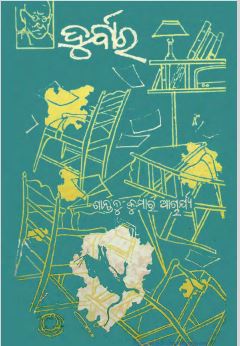Durbara, a notable work by renowned Odia author Santanu Kumar Acharya, first published in 1965, retains its relevance and charm even decades later. This compilation not only showcases Acharya’s narrative prowess but also offers a window into the cultural and social fabric of Odisha during the mid-twentieth century.
The book comprises a series of engaging stories that encapsulate the lives and struggles of ordinary people against a backdrop of socio-political changes. Each tale in “Durbara” is a vivid reflection of the human condition, often highlighting themes of resilience, love, betrayal, and the quest for identity. Acharya’s style is marked by a delicate balance of simplicity and depth, making his stories accessible without sacrificing the richness of the emotional landscape he explores.
One of the hallmarks of “Durbara” is Acharya’s ability to bring his characters to life. The vivid descriptions and nuanced portrayals create a sense of intimacy, allowing readers to connect deeply with the protagonists. From the joys of childhood innocence to the complexities of adult relationships, his characters navigate a wide array of experiences that resonate with readers of all ages. Whether it’s a farmer grappling with the impact of drought or a woman fighting societal norms, the characters are layered and multifaceted, making them relatable and memorable.
The stories in “Durbara” are not just entertaining; they are also infused with social commentary. Acharya skillfully addresses significant issues such as poverty, gender inequality, and the impact of modernization on traditional lifestyles. Through the lives of his characters, he invites readers to reflect on the broader social context and the struggles faced by marginalized communities. This aspect of his writing elevates “Durbara” beyond mere storytelling; it becomes a medium for raising awareness and fostering empathy.
The compilation reflects the cultural heritage of Odisha with its rich imagery and folklore. Acharya often weaves in elements of Odia traditions and values, imbuing the narratives with a sense of place and authenticity. The themes resonate on a universal level, yet they also celebrate the unique identity of Odia culture. This pulls readers into a world that is both familiar and rich with the nuances of regional life.
By 1973, when “Durbara” was republished, it had already carved a niche in Odia literature. It stood as a testament to Acharya’s skill as a storyteller and his ability to capture the zeitgeist of his times. The resurgence of the book encouraged new readers to discover its timeless tales, and it became a staple in the collections of literary enthusiasts in Odisha.
In conclusion, “Durbara” by Santanu Kumar Acharya is more than just a compilation of short stories; it is a profound exploration of life, community, and individual struggles. Through his compelling narratives, Acharya not only entertains but also enlightens, providing valuable insights into the human experience. The enduring appeal of “Durbara” speaks to its significance in Odia literature, making it a must-read for both young and seasoned readers alike. As generations continue to revisit Acharya’s work, “Durbara” remains a cherished piece of Odia literary heritage, inspiring awe and reflection with every reading.
Books Info
| Books name | Durbara/ଦୁର୍ବାର |
| Editor | Santanu Kumar Acharya |
| No Of pages | 147 |
| Publisher | Grantha Mandira |
| Publication | 1965, 1973 2p. |
| Printed At | Grantha Prakashani |
| Distributor | NA |

